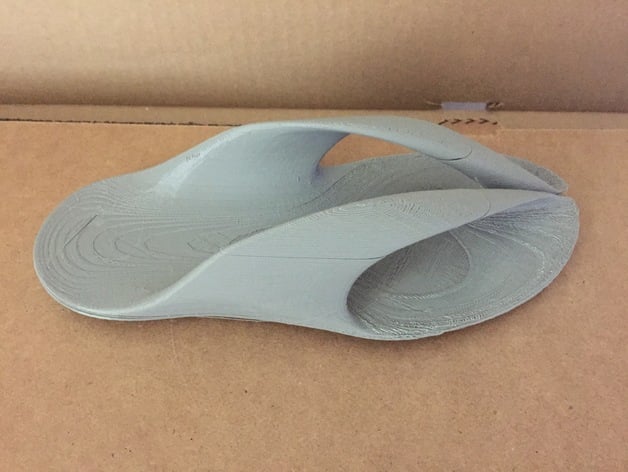
LoLa in South America
thingiverse
Lola is heading to South Africa to work at a school where many kids go without shoes. Can you design something that will protect their feet and be suitable for multiple children? Overview & Background: Imagine having to walk to school barefoot because you couldn't afford shoes. For many people in our world, walking is the primary means of transportation. The shoes can be fully printed, partially printed, or made from found objects. Objectives: Through this lesson, students will learn which designs stay on feet, provide comfort, and can be sized. They will analyze their designs for comfort, fit, use, and decide whether comfort or function is more important. Audiences: This lesson is suitable for 2nd-grade students and above. I recommend using it in 3rd grade, tying it to studying other parts of the world. Allowing students to build parts on the printer and parts from found objects makes this accessible to students with multiple skill levels. Print Settings Printer Brand: MakerBot Printer: MakerBot Replicator (5th Generation) Rafts: No Supports: No Overview and Background: How many kids are denied access to school or a grocery store? How many kids end up with diseases that kill or seriously threaten their health, all because of a disease or fungus they picked up while navigating the streets in their bare feet? Many children in developing countries grow up without shoes. Use these for discussion points with your students: A leading cause of disease in developing countries is soil-transmitted diseases, which can penetrate the skin through bare feet. Wearing shoes can help prevent these diseases and the long-term physical and cognitive harm they cause. Wearing shoes also prevents feet from getting cuts and sores. Not only are these injuries painful, but they're also dangerous when wounds become infected. Many times children can't attend school barefoot because shoes are a required part of their uniform. If they don't have shoes, they don't go to school. If they don't receive an education, they don't have the opportunity to realize their potential. Discuss is it a right or a privilege to have shoes? Have students journal - What would your life be like without shoes? Skills Learned (Standards): Grade 2: K-2-ETS1-1: Ask questions and define problems in real-world scenarios. K-2-ETS1-2: Develop solutions based on constraints. Grade 3: K-3-ETS1-1: Design a solution to a problem that includes criteria and constraints. K-3-ETS1-2: Test the design using data from tests or simulations. Task: Can you design a pair of shoes for someone in South Africa? Keep in mind, you don't know their size, so what can you do so that your shoes can be worn by any student who receives them? Research: Take some time to research shoes. Use the links below to get started. What are people using, why are they using specific materials? How do you pick a size or design? Design: Sketch out your design. Label the materials you will need and where they are in your sketch. Development: Print it, make it, put it together. Test your shoe. Does it work, fit? Try to work out kinks. Materials Needed: Depending on which manner the students want to use to construct the design, students may need access to: * ipads * computer * printer * found objects * glue Handouts & Assets: 2011 day without shoes video -https://www.youtube.com/watch?v=BitShRujoeA&feature=youtu.be Day without shoes info for 2017 (and info on countries and what life is like w/o shoes) -http://www.toms.com/one-day-without-shoes Duration of Lesson: Duration: 1-2 weeks. Allow one day for information and discussion, a full week (probably a week and a half) for designing and testing, and have a full day to revisit and share designs and debrief. Preparation: I would recommend using tinkercad for this design, but if your students are more comfortable in another design environment, that works too. For students struggling to design on tinkercad, you might show them makerbot print shop and have them draw their design on paper and then scale it. Rubric and Assessment: See attached PDF. References: * Engineering behind shoe design - http://illumin.usc.edu/72/the-engineering-behind-shoe-design/ * Shoe Design Flaws - http://www.lemsshoes.com/shoe-design-flaws.html * Shoe history - https://en.wikipedia.org/wiki/Shoe * Making shoes from Jeans - http://www.solehope.org/your-old-denim-changes-kids-lives-solestories/
With this file you will be able to print LoLa in South America with your 3D printer. Click on the button and save the file on your computer to work, edit or customize your design. You can also find more 3D designs for printers on LoLa in South America.
